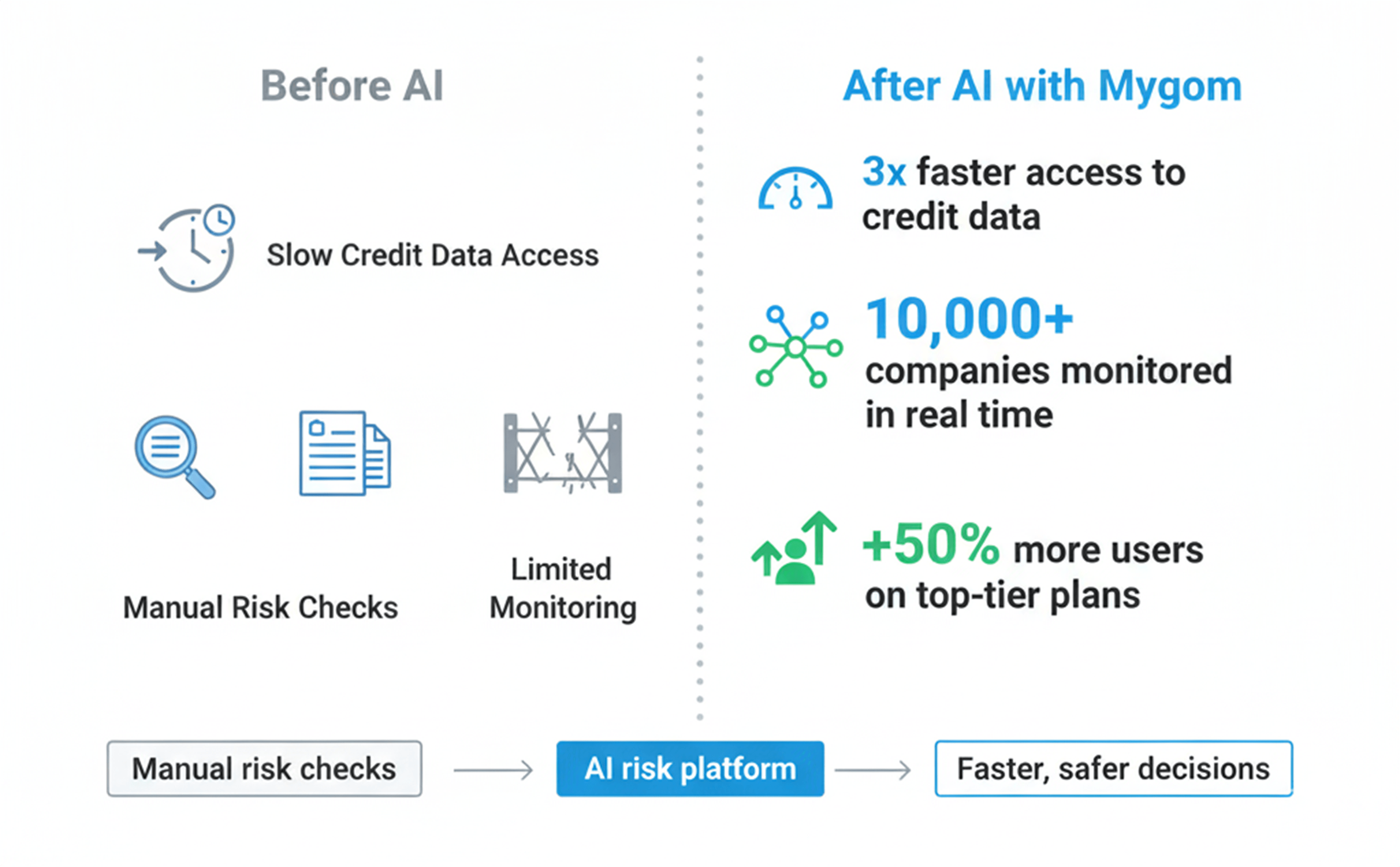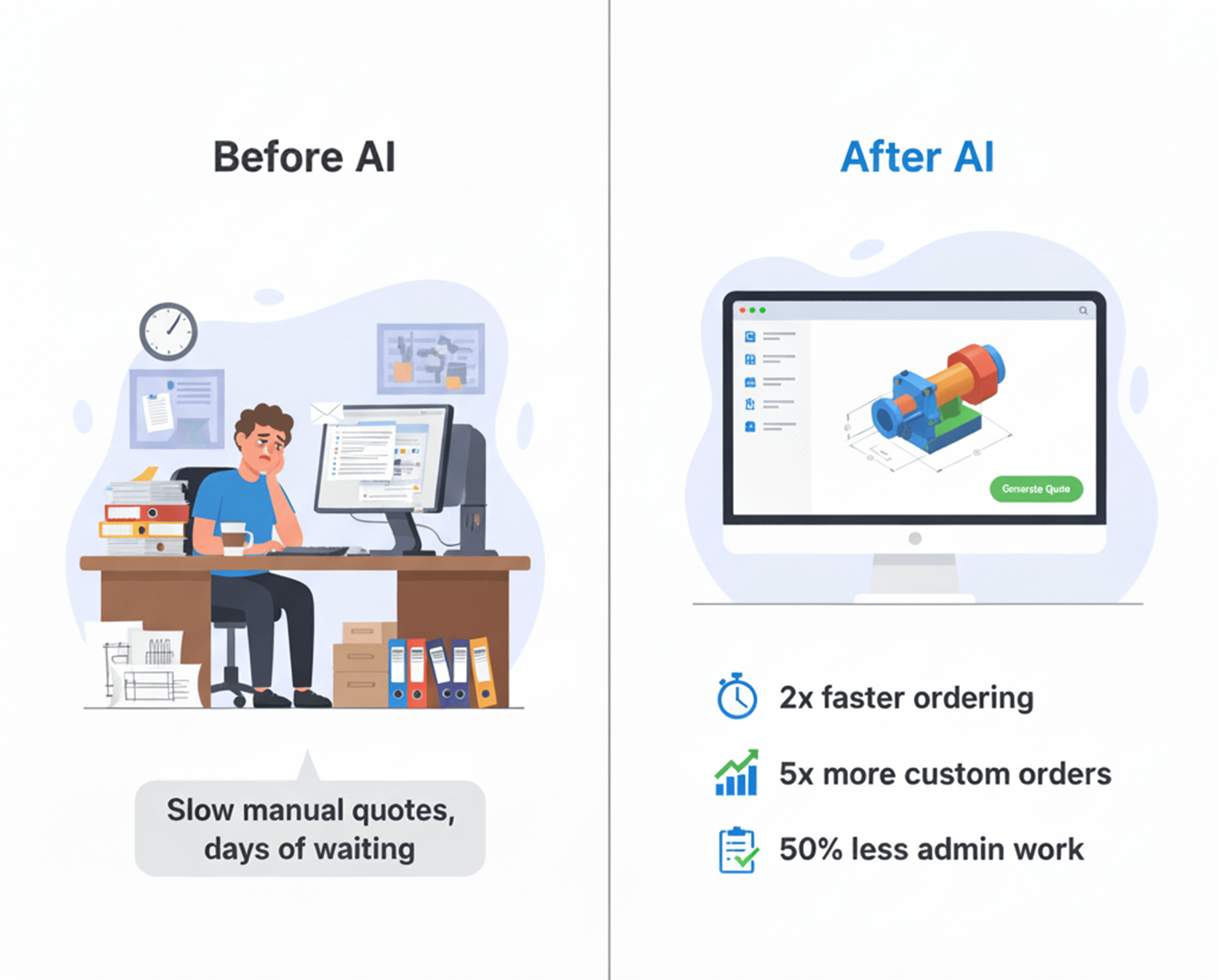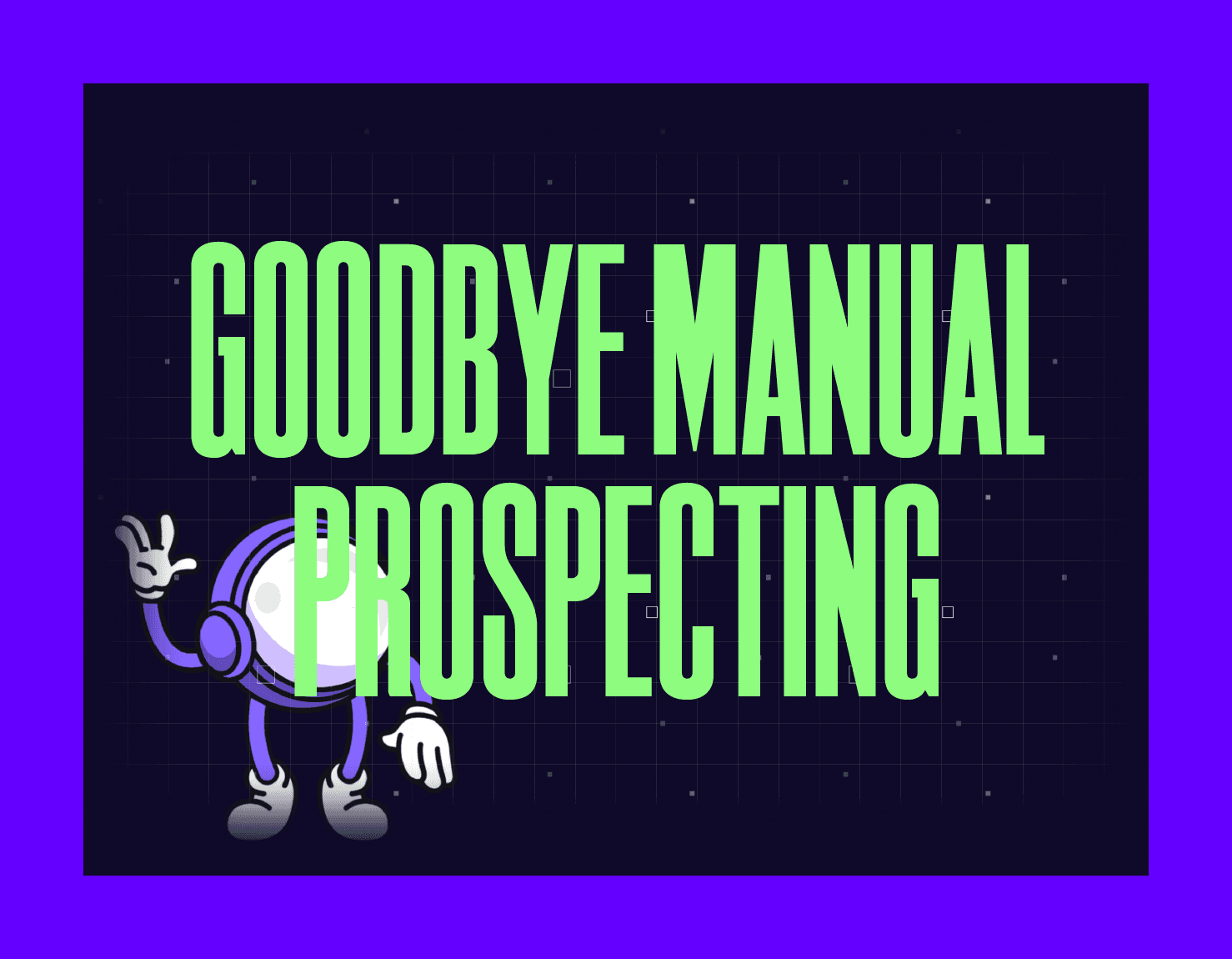Real AI Results for Modern Businesses

Most companies are approaching AI adoption completely backwards. They treat it like a side project, something meant for “future-proofing,” never as a solution for today’s urgent pain points. Yet, the AI benefits for business 2025 are clear and pressing - teams waste weeks on manual work that AI could finish in minutes, and costs spiral out of control. A single bottleneck in processes can quietly cost thousands each month. We’ve even seen clients lose customers because a competitor’s response time was faster by just a few seconds.
At Mygom.tech, we don’t just automate tasks, we revolutionize how our clients connect and operate. Our AI-driven tenant-landlord matching platform (opens in new tab) helped one client speed up finding suitable commercial spaces by 40%, provide transparent tenant financial profiles, and enable direct communication - cutting leasing times in half while reducing costs. This creates a smarter, faster, and fairer leasing experience, freeing both tenants and landlords to focus on growth instead of friction.
Why does this matter now? Because 2025 isn't just another tech milestone. It’s the moment when AI’s benefits become vital for survival, not just a nice-to-have. A Syracuse University analysis (opens in new tab) shows that AI-powered agents can handle 13.8% more support work than old teams - at higher quality and speed. That kind of leap isn't optional when your market expects instant answers and zero mistakes.
Manual processes aren't just slow, they're a risk to your relevance. The pressure is real. Data from the International Monetary Fund (opens in new tab) shows that companies delaying AI adoption are falling behind in both output and customer expectations. If you're still clinging to "the way we've always done it," you're already behind.
AI isn't just a buzzword anymore. It’s now the foundation for speed, accuracy, and scale across every industry. The question isn't if you’ll adopt AI, it's whether you’ll lead the change or get left behind.
Our View: Why We Bet on AI Business Impact in 2025
Making Complex Ideas Simple
Many companies still treat AI like a complicated science project - endless pilots with little real impact. We believe that approach is backwards. To us, AI is more like a "robot friend" that makes business complexity fade into the background.
Every time we start a custom software build, we're not just writing code. We're scripting a story. The plot always begins with a messy problem: siloed data, manual entry, or workflows nobody loves but everyone tolerates.
What sets our approach apart is using AI to turn pain points into invisible, seamless processes. Predictive analytics flag risks before they snowball. Automated document processing means invoices don’t sit idle in inboxes. Adaptive interfaces learn from each user and grow smarter over time. It’s not just automation, but true responsiveness to changing needs.
A Stanford HAI report (opens in new tab) found nearly 90% of notable AI models are now industry-ready, a game-changer for 2025. The AI benefits for business 2025 go far beyond cost savings, they give teams back hours each week and enable decisions based on real data patterns instead of guesswork.
For example, our AI invoice automation (opens in new tab) platform cut processing time by 40%, replacing manual data entry and payment matching with AI that reads diverse invoice formats and flags duplicates. It uncovered wasted subscriptions and found early-payment discounts automatically. This gave finance teams hours back, reduced errors, and provided clear real-time financial insights, letting them focus on growth instead of grunt work.
Client as Hero: Our AI Journey
At Mygom.tech, we see ourselves as guides - our clients are always the heroes of their own transformation stories. Because of that mindset, our technology never takes center stage; instead, it powers their leap forward behind the scenes.
Take our work with a European client who developed an AI-powered business risk platform (opens in new tab). It enables users to access credit data 3x faster, monitor 10,000+ companies in real time, and boosted premium plan conversions by 50%. This platform turns complex data into clear, actionable insights, empowering users to make faster, safer decisions with confidence.
According to BCG (opens in new tab), 84% of leaders say AI is now vital to strategic advantage. Not just automation theater or surface-level pilots.
If you ask about us, our capabilities, or why we bet so hard on this technology, the answer is simple. In 2025 and beyond, businesses need solutions (opens in new tab) that adapt as fast as their markets move. That takes more than code. It takes an evolving narrative where your success is always the headline act.

Proof Not Hype: Real Results from AI Change
Case Study: Transforming Steel Manufacturing with AI-Driven ERP
Most companies measure digital transformation the wrong way. They obsess over dashboards and roadmaps while their teams waste hours on manual tasks that a smarter system could streamline in real time.
We saw this firsthand with a steel manufacturer (opens in new tab) weighed down by slow, error-prone Excel-based production tracking.
Teams were stuck updating spreadsheets with outdated data, causing delays, miscommunication, and costly mistakes. We built a custom AI-driven ERP platform to manage material requests, bidding, deliveries, and real-time tracking on the factory floor.
The result? A 15% increase in production throughput, 35% faster material picking and dispatch, and 3 hours saved per production manager daily. This connected platform transformed manual chaos into clear, seamless workflows, empowering teams to make faster, smarter decisions and drive business growth.
From Data Swamps to Data Lakes: AI in Action
AI is more than automation, it uncovers hidden value buried in your data swamp. Take our work with a steel manufacturer hindered by slow, error-prone manual Excel tracking. Their teams wasted hours managing outdated, disconnected spreadsheets, causing costly delays and miscommunication.
We developed a custom AI-powered ERP platform (opens in new tab) to transform production management, from material requests and supplier bidding to real-time tracking on the factory floor. This single connected system replaced chaotic workflows with seamless, live updates, enabling clear, data-driven decisions.
A Syracuse University study (opens in new tab) highlights talent shortages as a top challenge in harnessing advanced analytics capabilities, a challenge we saw firsthand in our recent project, where embedding user upskilling throughout implementation empowered the client’s team to successfully own and operate their AI solution post-launch.
But it's not all magic wands and instant insights. It demands groundwork like cleaning messy data and integrating legacy systems, stabilizing models through iterative refinements. A Boston Consulting Group report found that 43% of leaders see implementation issues as their biggest barrier, but those who push through achieve faster responses and market agility.
By 2025, repetitive roles will shift dramatically as automation becomes essential. The IMF (opens in new tab) predicts administrative tasks will face major disruption.
So why wait? Embrace AI now to turn complex data into clear insights, speed operations, and gain a competitive edge before it becomes table stakes.
Five Advantages of AI (and Why They Matter)
- Hyper-speed productivity gains - Finish in minutes what used to take hours.
- Fewer human errors - Machines don't get tired or distracted, reducing mistakes significantly.
- Deeper insights from untapped data - Find patterns hiding in plain sight.
- Adaptive decision-making at scale - Respond instantly to evolving market conditions and operational changes.
- More time for creative problem-solving - Free your team from repetitive grunt work to focus on higher-value innovation.
These aren't just buzzwords - they're proven outcomes we witness daily. The companies that stop waiting for perfect conditions and start building with purpose today are capturing competitive advantage and shaping their future success.
Why Skeptics Miss the Point: The Real AI Adoption Advantages
Many companies still believe AI is a tool only for tech giants or digital disruptors. We've met this skepticism among family-run manufacturers, local logistics firms, and mid-sized retailers across Europe who say, "AI isn’t built for our world." That mindset is outdated.
In 2025, AI’s benefits have spread far beyond Silicon Valley, revolutionizing traditional industries like metal fabrication with practical, measurable results. For instance, we partnered with a sheet metal processing company (opens in new tab) specializing in custom metal parts, a sector often overlooked in tech discussions. Their quoting process was slow and manual, forcing customers to email designs and wait days for quotes.
We developed a custom e-commerce quoting system allowing instant price calculation and 3D part previews. Customers can upload designs, select materials, and get immediate, accurate quotes - all while the system automatically prepares production-ready files. The result? A 2x faster ordering process, a 5x increase in custom orders, and 50% less administrative work.
This example highlights how AI democratizes access to advanced technology, enabling SMEs to leapfrog competitors by solving real pain points with tailored AI solutions. As MIT Sloan terms it, this shift is "industry democratization," where AI becomes a practical growth enabler across sectors.

ROI Isn't Just Cost Cutting
Many skeptics miss the mark by viewing AI solely as a cost-saving tool, robots replacing jobs or automating invoices. But the true value of AI goes much deeper and broader.
A McKinsey global survey (opens in new tab) reveals that companies using AI in three or more core functions experience revenue growth at nearly twice the rate of non-adopters in similar industries. This translates into smarter decision-making, accelerated product cycles, and entirely new service opportunities, not just incremental efficiency gains.
What drives these results? The five pillars of AI: automation (handling repetitive tasks), prediction (forecasting demand and trends), personalization (customizing user experiences), optimization (streamlining complex processes), and augmentation (empowering human expertise). When businesses harness the full power of these pillars, the returns compound exponentially - fueling market disruption and competitive advantage.
Data from Syracuse University (opens in new tab) shows more than 300 million global jobs could be affected by new waves of AI technology over the next few years. A signal that every industry must adapt or risk irrelevance.
The takeaway? Organizations sitting on the sidelines gamble against unstoppable market momentum and their own long-term relevance. By 2026, even traditional players will boast "AI-driven productivity" strategies as a badge of survival, because those who don’t will fade into obscurity.
The Next Chapter: How Leaders Turn AI from Promise to Payoff
We’ve seen it time and again: companies treating AI as a side project see little change. But when leaders make AI central to their custom software strategy, the impact is transformative. Weeks of manual work disappear, errors diminish, and new insights emerge from data noise.
In our projects, teams move from feeling overwhelmed to regaining control. Their software doesn’t just run faster - it thinks smarter.
Start with two practical steps: first, map your actual workflow, the real tasks, not just the idealized version in PowerPoint; second, choose one end-to-end process to automate fully. Involve your team and partners as co-creators, not bystanders. Test early and often using live data, not demos. Expect obstacles - they’ll help you refine your story and solutions.
By 2025, market leaders will be those embedding AI for real-time decision-making and agility. Predictive maintenance will reshape manufacturing. Dynamic routing will revolutionize logistics. Retail will rely on hyper-personalized offers informed by behavioral models and predictive analytics instead of relying on intuition alone. Even cautious sectors like banking and healthcare will embrace fast, safe iterations. AI learns quickly if given the chance.
The future belongs to businesses with AI woven invisibly into their processes - not just a tool, but a teammate. As Harvard analysts report (opens in new tab), 20% of marketing organizations already see measurable gains from advanced AI adoption. Why wait for competitors to rewrite your story?
If you’re ready for chapter one - a working prototype tailored to your team’s actual work - let’s build true business automation with AI at your core. The path won’t be fairy-tale easy. There will be challenges. But every one will lead you closer to a future worth telling stories about.
How Mygom Can Help
Mygom.tech specializes in turning complex business challenges into streamlined, AI-powered solutions that drive real results.
Whether you’re looking to automate workflows, unlock hidden insights, or build smarter customer experiences, our expert team collaborates closely with you to deliver custom software tailored to your unique needs and goals.
Ready to transform your business with AI?
Contact (opens in new tab) Mygom.tech today and start building the future of your industry.
Gabriele J.
Marketing Specialist


